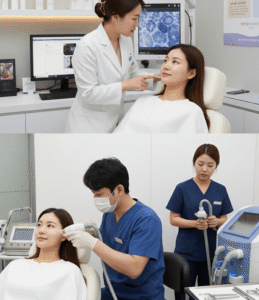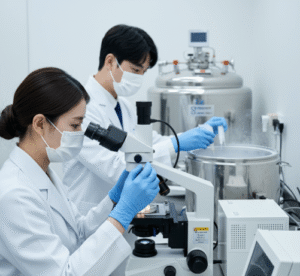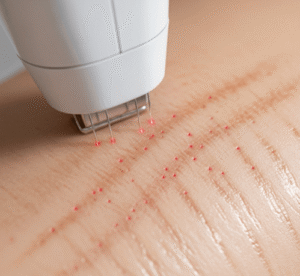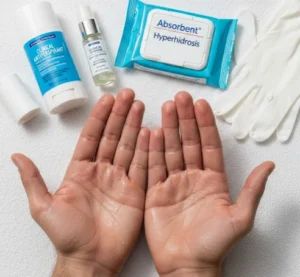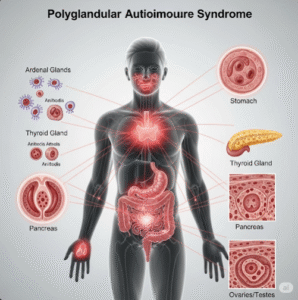What is an Emollient?
Emollients are moisturizing treatments that soften and soothe the skin. They are widely used to treat dry, rough, or irritated skin and help restore the skin’s barrier function.
💧 Common forms of emollients include:
✔️ Creams – Lightweight, easily absorbed
✔️ Ointments – Thick, greasy, provide long-lasting hydration
✔️ Lotions – Light, spreadable, suitable for large areas
✔️ Gels – Non-greasy, often for sensitive or oily skin
Mechanism of action:
➡️ Create a protective layer on the skin → Prevents water loss
➡️ Increase skin hydration → Improves elasticity and smoothness
➡️ Reduce irritation and inflammation → Particularly in eczema, psoriasis, or dermatitis
In Korea, emollients are widely used in dermatology clinics, hospitals, and pharmacies, often recommended by dermatologists or available over-the-counter. Korean products may include advanced formulations with ceramides, hyaluronic acid, and natural oils for enhanced skin barrier repair.
Why They’re Used
Emollients are primarily used to treat and prevent dry skin and skin conditions.
✔️ Manage chronic skin conditions – Eczema, psoriasis, ichthyosis, and dermatitis
✔️ Soothe irritation and redness – Especially in sensitive skin
✔️ Prevent infection – By maintaining intact skin barrier
✔️ Support skin healing – Post-procedure or post-surgery dermatology care
Clinical Benefits:
➡️ Reduce itching and discomfort → Improves quality of life
➡️ Protects skin from external irritants → Allergens, pollutants, and harsh weather
➡️ Maintain skin barrier → Prevents further complications like eczema flares
➡️ Enhances effectiveness of topical medications → Applied under steroid creams or other dermatologic therapies
In Korea, emollient therapy is integrated into daily skincare routines, especially for patients with chronic skin diseases or those undergoing dermatological treatments.
Alternatives
While emollients are the mainstay of hydration and barrier repair, alternatives or adjuncts include:
⭐ Humectants – Glycerin, urea, hyaluronic acid; attract water into the skin
⭐ Occlusives – Petrolatum, mineral oil; prevent water loss
⭐ Topical corticosteroids – For inflammation in eczema or dermatitis
⭐ Prescription barrier repair creams – With ceramides or specialized lipids for severe skin conditions
👉 Key Point: Emollients are often combined with other treatments for maximum therapeutic benefit, but they remain the first-line treatment for dry skin.
Preparation / Considerations
Before using emollients, patients should consider:
🔹 Identify the type of skin – Dry, oily, sensitive, or combination
🔹 Choose formulation – Creams for moderate dryness, ointments for severe dryness
🔹 Patch test for allergies – Especially with scented or herbal formulations
🔹 Consider underlying conditions – Diabetes, eczema, or psoriasis may need specific formulations
⭐ Frequency and amount → Dermatologists recommend applying generously 2–3 times per day or as needed
⭐ Avoid irritants – Fragrances, alcohol-based products, or harsh soaps
How It’s Used / Applied
Emollients are applied topically using careful technique:
- Cleanse the area
✔️ Use mild, fragrance-free cleansers
✔️ Pat skin dry gently without rubbing - Apply emollient
🔹 Use generous amount and spread evenly over affected area
🔹 Apply within 3 minutes of bathing to lock in moisture
🔹 Reapply as needed, especially after washing hands or showering - Special techniques
➡️ “Soak and seal” method – Apply emollient immediately after soaking in lukewarm water
➡️ Layering under medication – Emollients can be applied under steroid creams or other topical treatments for better absorption
Highlights:
✔️ Non-invasive and safe
✔️ Daily application ensures best results
✔️ Adaptable for all ages and skin types
Recovery / Follow-up
Emollient therapy is ongoing and preventive:
✔️ Immediate relief from dryness and irritation
✔️ Improvement in skin barrier function within days to weeks
✔️ Reduced flare-ups in chronic skin conditions
✔️ Regular use prevents recurrence
⭐ Patients are advised to monitor skin response and consult a dermatologist if irritation persists
⭐ Follow-up may be needed for severe eczema or psoriasis to adjust therapy
Complications / Side Effects
Emollients are generally safe, with rare side effects:
⚠️ Allergic reactions – Rash, redness, itching (rare, mostly with scented or herbal products)
⚠️ Greasy or sticky feeling – May be inconvenient but not harmful
⚠️ Acne or folliculitis – Rare if applied to acne-prone areas with heavy ointments
⚠️ Contamination – Avoid using expired products or products stored improperly
➡️ In Korea, high-quality, dermatologically tested emollients minimize the risk of side effects, and pharmacists/dermatologists can recommend suitable products.
Treatment Options in Korea
In Korea, emollients are widely available with options for both over-the-counter use and prescription-grade therapy:
🏥 OTC Emollients – Widely available in pharmacies for general dry skin care
🏥 Prescription Barrier Repair Creams – Ceramide-based, suitable for eczema and atopic dermatitis
🏥 Combination Therapy – Used alongside topical steroids, calcineurin inhibitors, or antifungals
🏥 Dermatology Clinic Guidance – Personalized recommendations based on skin type and condition
🏥 Medical Skincare Products – Advanced formulas with hyaluronic acid, squalene, or natural oils
Why Korea is a Preferred Destination:
✔️ High-quality dermatology products – International standards, clinically tested
✔️ Expert dermatologists – Provide guidance for chronic skin conditions
✔️ Accessible pharmacies and clinics – OTC and prescription options widely available
✔️ Medical tourism support – English-friendly services and skincare consultations
Approximate Costs in Korea:
🔹 OTC Emollient Creams / Lotions → $10 – $30
🔹 Prescription Barrier Repair Creams → $30 – $80
🔹 Combination Therapy / Clinic Consultation → $50 – $150
🔹 Advanced Medical Skincare Products → $50 – $120
Conclusion
Emollients are essential for maintaining healthy, hydrated, and protected skin.
They help:
✔️ Treat and prevent dryness
✔️ Soothe irritation and redness
✔️ Maintain skin barrier function
✔️ Support ongoing dermatological treatments
In Korea, patients benefit from:
✔️ High-quality emollient products – OTC and prescription
✔️ Expert dermatologists – Personalized guidance for chronic skin conditions
✔️ Safe, effective, and accessible skincare options
✔️ Integration with medical and cosmetic dermatology services
👉 Key Message: Regular use of emollients is crucial for skin health, preventing dryness, irritation, and complications from chronic dermatological conditions.




